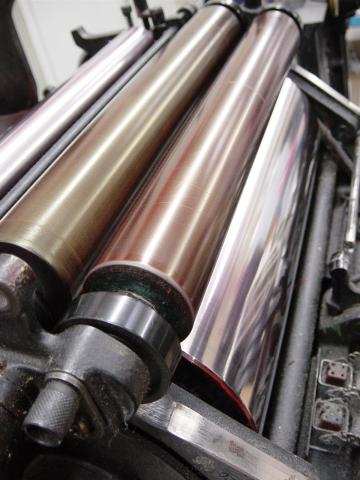
The majority of flexible packaging is printed using either the rotogravure or the flexographic printing process.
- Flexography Printing - A form of relief printing where ink is applied to a rubber or polymer plate on which the pritnign image is raised above the rest of the surface as a 3_D positive mirrored relief.
- Rotogravure Printing - An intaglio process in which a negative image is etched into the surface of a copper printing cylinder as tiny cells or dots of various sizes and depths The copper is chrome plated for durability. Ink is applied to the surface and a flexible metal blade called a doctor blade removes excess ink, leaving the surface clean, with ink only in the depressions.
The key hazard in these processes is an explosion from the buildup of solvent vapors in the oven or dryer atmosphere. This buildup could occur by a malfunction in the production process such as: a sudden or improper amount of coating, a change in ventilation controls or excessive speed. In any of these cases, the concentration of flammable vapor has an opportunity to rise above safe levels, creating a potentially explosive mixture of vapor in air.
The design specification for safe operation of a solvent oven or dryer is outlined in safety and fire codes. The codes limit the maximum solvent concentration allowable to 25% of the LFL under worst case operation.
However if a flammable vapor analyzer is installed as a safety control the maximum allowable concentration is 50% LFL.
- Our PrevEx Analyzers are the only analyzers that meet all the requirements of the NFPA standards. In addition, the analyzers improve the efficiency of the process and significantly lower process energy requirements.

Add new comment